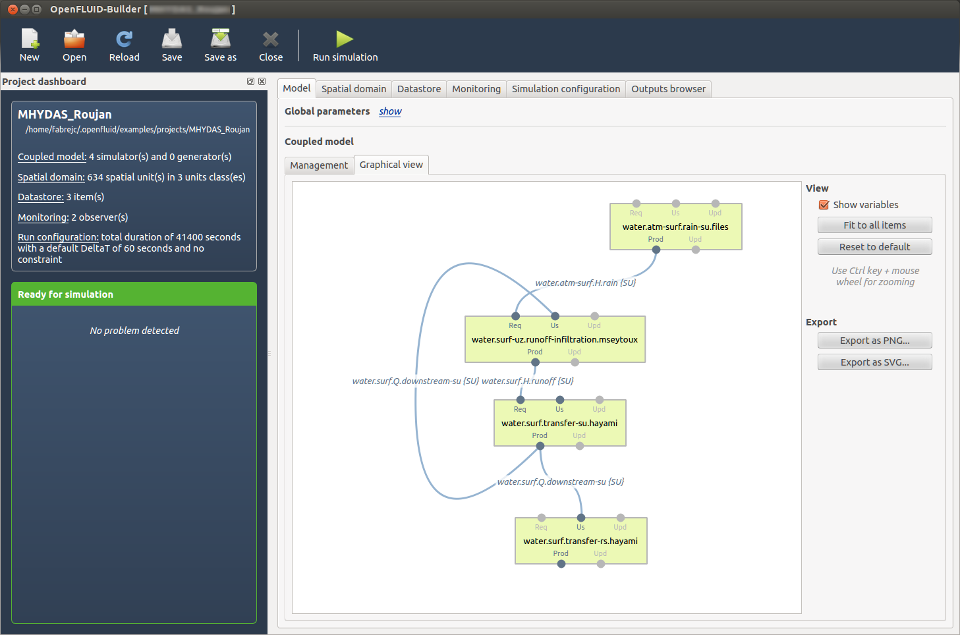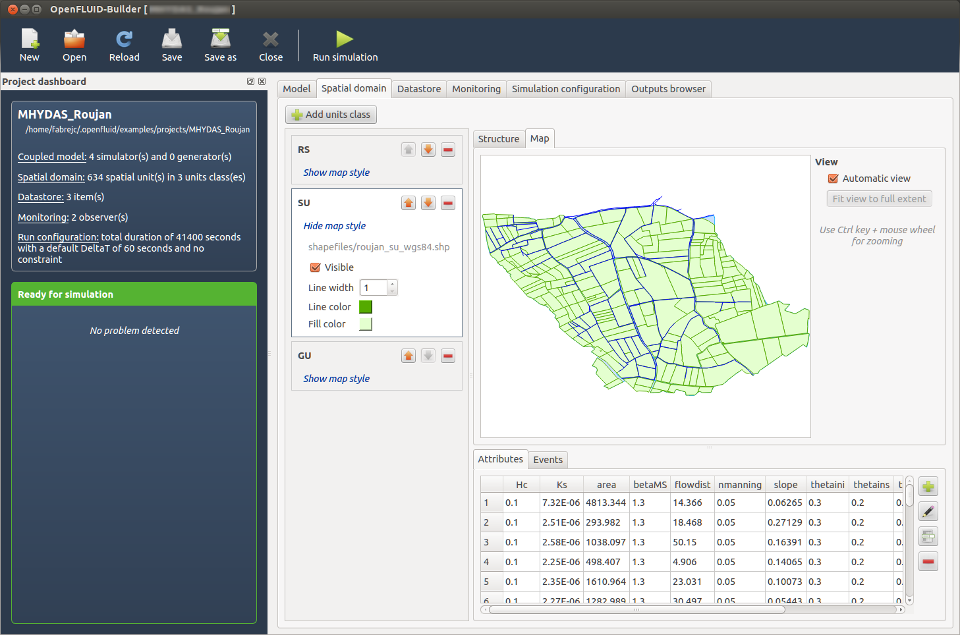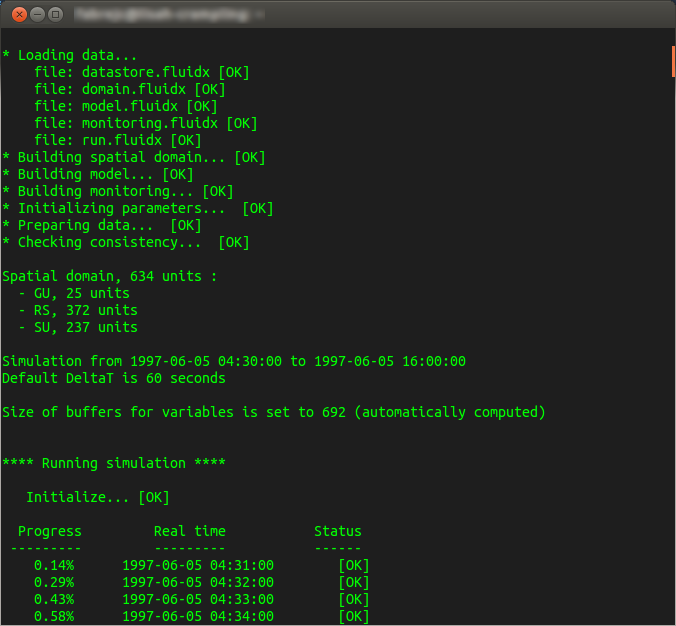

OpenFLUID simulations can be run either using the command line interface (openfluid program), the graphical user interface (openfluid-builder program), or using the R environment through the ROpenFLUID package.
All these programs and packages use the same input dataset format (See Formats of input datasets), and propose all concepts and features of the OpenFLUID software environment, as they share the same OpenFLUID software framework. A simulation input dataset can be executed using any of the following OpenFLUID software programs.
The OpenFLUID-Builder user interface proposes a graphical environment to prepare, parameterize, execute and exploits simulations with OpenFLUID. It is a good starting point for beginners who discover the OpenFLUID concepts and environment. Once OpenFLUID installed, it can be run either from the program menu of your system or from a console using the openfluid-builder command.


OpenFLUID-Builder functionalities can be extended by Builder-extensions which are graphical plugins for this user interface. By default, OpenFLUID is provided with two Builder-extensions: a graph viewer representing the spatial domain as a connected graph, and a spatial data importer to create a spatial domain from standard GIS data file formats (such as Shapefiles) or from a WFS service (Web Feature Service) available from a local or an internet server.
The OpenFLUID command line interface allows to run OpenFLUID simulations from a terminal, using the openfluid command. This usage is particularly useful for running multiple simulations in batch or on compute systems such as compute clusters.
To run the simulation, execute the openfluid command with adapted command line options. You can run a simulation by giving the input dataset path and the results output path:
openfluid -i </path/to/dataset> -o </path/to/results>
You can also run a simulation from an OpenFLUID project, using the -w or --project command line option, followed by the path to the project path. In this case, the project must be a valid OpenFLUID project, usually created using the OpenFLUID-Builder user interface, or by hand.
See Command line options or run openfluid --help to get the list of available options.

OpenFLUID can be used from within the GNU R environment with the ROpenFLUID package. This package allows to load an input dataset, parameterize and run a simulation, exploits simulation results.
It is really useful for taking benefit of all R features and packages for sensitivity analysis, optimization, uncertainty propagation analysis, and more.
Example of a simulation launch in R using the ROpenFLUID package:
library('ROpenFLUID')
ofsim = OpenFLUID.loadDataset('/path/to/dataset')
OpenFLUID.runSimulation(ofsim)
data = OpenFLUID.loadResult(ofsim,'TestUnits',15,'var.name')
More details are available in the specific ROpenFLUID documentation, available on the OpenFLUID web site.
 1.7.6.1
1.7.6.1